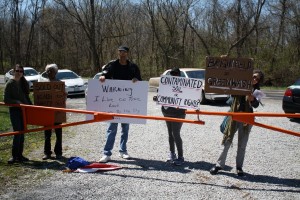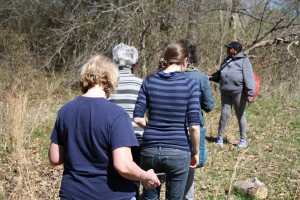|
Carbondale was founded as a railway easement. From 1902-1991, the raw materials that were shipped out on the trains -coal, timber, oil and minerals-were also used at the Koppers Tie Yard to manufacture the railroad ties and utility poles ubiquitous to the landscape. 400 lb milled hardwood logs were soaked in coal-tar creosote, a chemically toxic substance manufactured by coking petroleum or gas. The dripping hot logs were moved by work gangs competing at piece-work rates. Elder Northeast residents remember the skin lesions plant workers bore from their exposure to creosote, and how workers would bury their clothes in the ground to absorb the sticky tar.
In the 1980s the plant was closed and it was placed on the EPA’s National Priorities List for cleanup by a new owner, another multinational. There was no oversight for determining whether chemicals and heavy metals had already migrated into the nearby community where people lived. As the cleanup proceeded, Carbondale was visited by a company that installs solar collectors on “brown fields” to produce electricity. This looked like a great green deal to city officials although Northeast residents repeatedly expressed apprehension to new development, and those living closest to Koppers protested vehemently. I attended these meetings with Concerned Citizens of Carbondale, an activist group within the black community, as a witness, speaker and ally. All our requests to slow down, examine the cleanup  efficacy, or the potential that migrating toxins play a role in the health difficulties of the Northeast side population were ignored, congealing with a generally negating experience for people on the Northeast side of town. As a way to recast the failure and dejection that came after losing this battle, we begin to imagine the toxins as a haunting, as ghosts. We go off into the field to try to detect them. An ongoing research. efficacy, or the potential that migrating toxins play a role in the health difficulties of the Northeast side population were ignored, congealing with a generally negating experience for people on the Northeast side of town. As a way to recast the failure and dejection that came after losing this battle, we begin to imagine the toxins as a haunting, as ghosts. We go off into the field to try to detect them. An ongoing research.
|